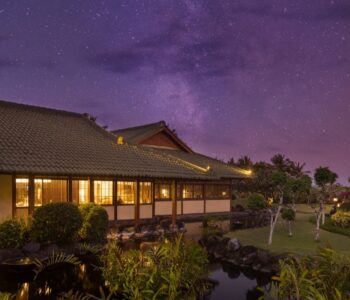The west Bali villages of Palasari and Blimbingsari are two Christian hamlets that display a unique amalgamation of Balinese and Gothic architecture. Whilst the population of Bali is predominantly Hindu, other faiths find a home here and even pay homage to the shared visual identity of the island.
Bali is known as the island of a thousand temples, and so to witness two towering Christian places of worship comes as quite a surprise for those who happen to come across these special hamlets in the west.
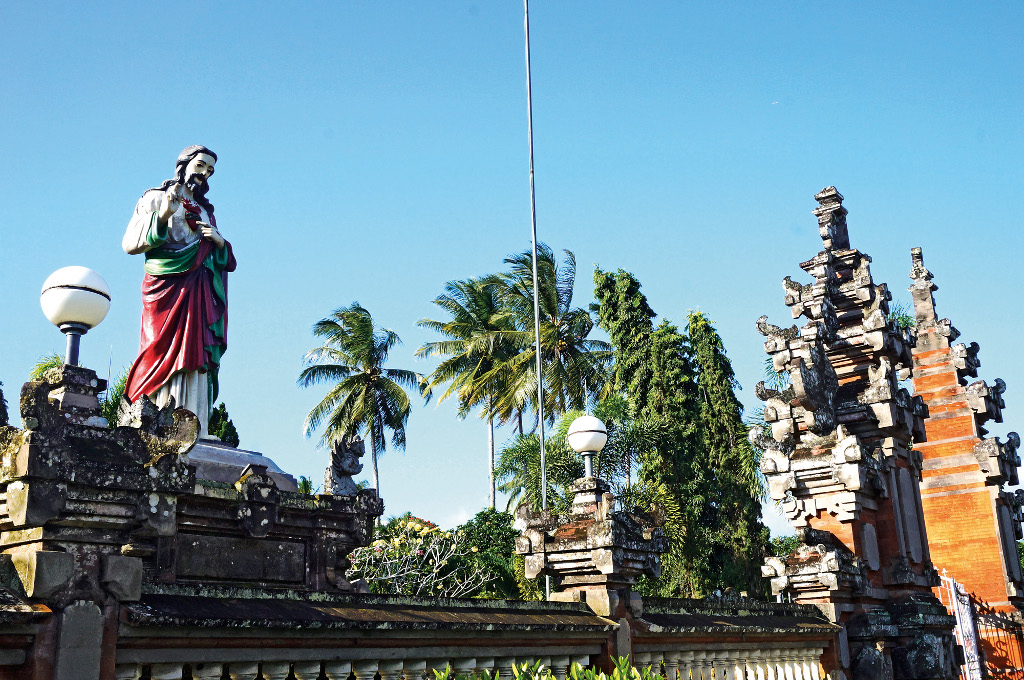
Many know West Bali for its national park, much of which is completely uninhabited. What many don’t know about this area is that it is also a melting pot, for over the centuries migrants from more populated areas in Bali, Java, Madura, and even Sulawesi established communities here. And so this ethnically, culturally, and geographically diverse area offers surprises for visitors who make the effort to explore it.
The Catholic Palasari is breathtaking with its church set on the village’s town square. The architecture is Gothic but showcases Balinese touches in the spires, which resembles the meru (multi-tiered shrine) in a Hindu temple, and features a façade with the same shape as a temple gate. During certain occasions, visitors can find some locals selling figurines of Jesus outside the church. Some 100 metres away from the church is Goa Maria, cave of Maria, a pilgrimage site overlooking the rich greenery of the surrounding hills. Another interesting cultural anomaly here in the highlands of West Bali.
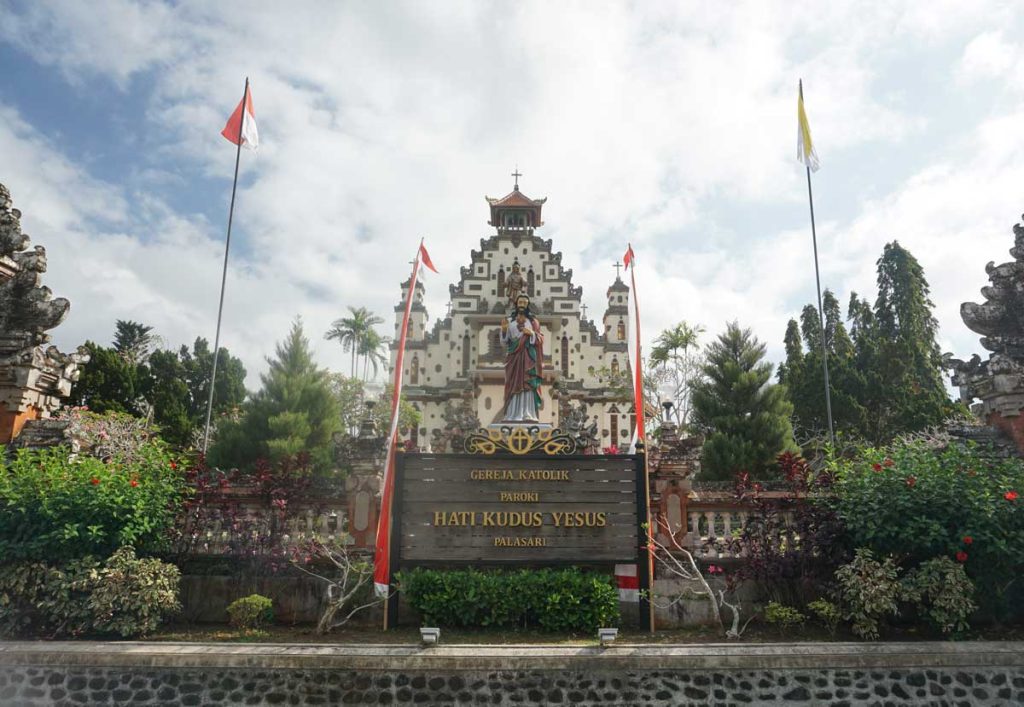
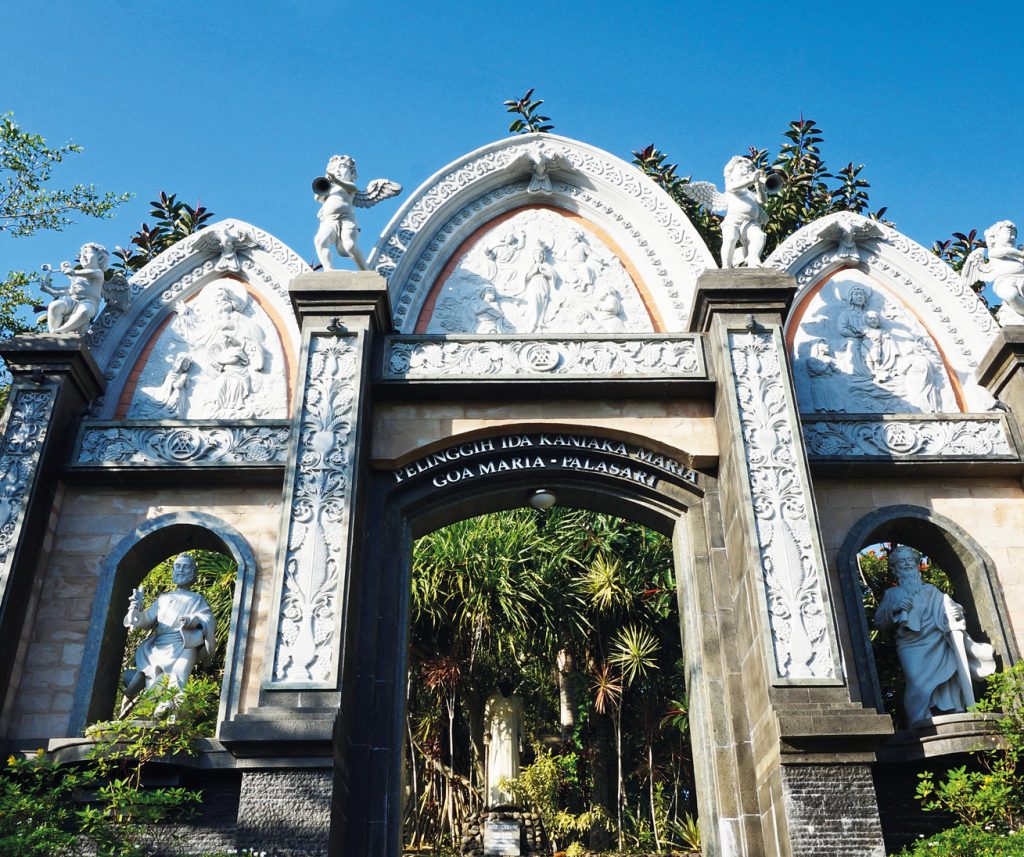
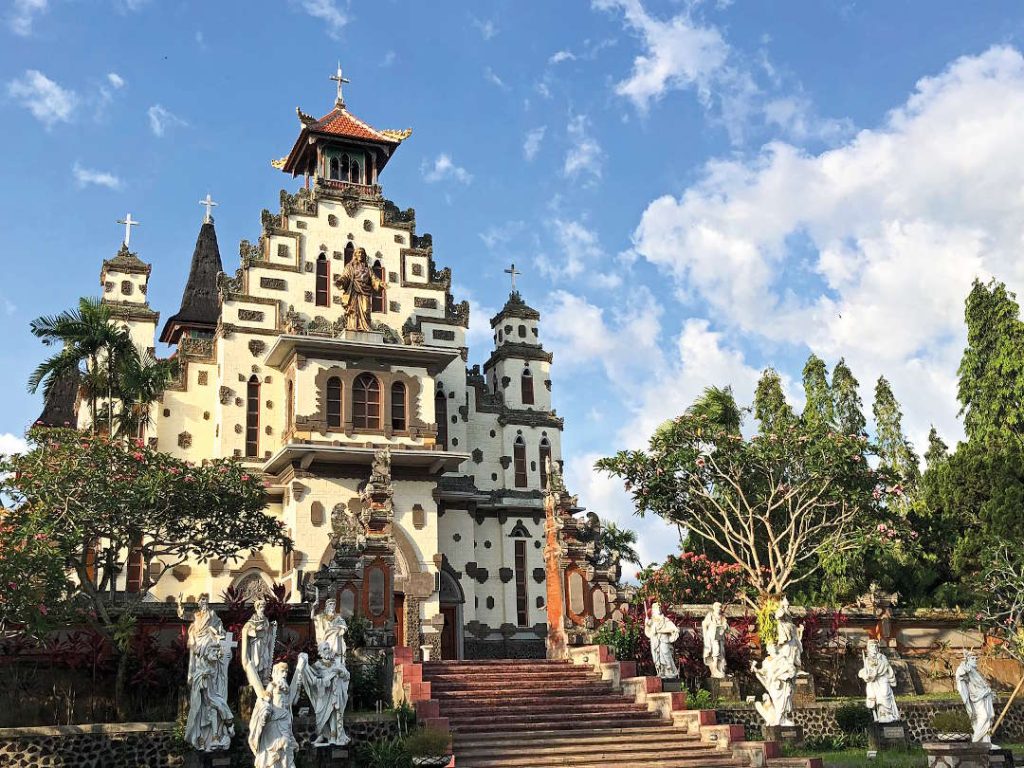
The rest of the village offers tranquility, with swaying palms neatly decorated on the roadsides in front of the villagers’ home. In addition to the palm trees, manicured grass lands also adorns Palasari, making it a very neat village.
The nearby Blimbingsari, is a religious village and the home to Bali’s biggest Christian community. Though the church in Belimbingsari is as not as extravagant as the one in Palasari, it really shows an amazing structure with features rendered in a distinctly Balinese style – instead of a church bell, there’s a Balinese kulkul (warning drum) like those in a Hindu temple. The entrance is through an gapura gate, and the carved angels adorning the church look very Balinese. Outside the church is a wooden sign saying “Gereja Kristen Protestan Di Bali” (Protestant Christian Church in Bali).
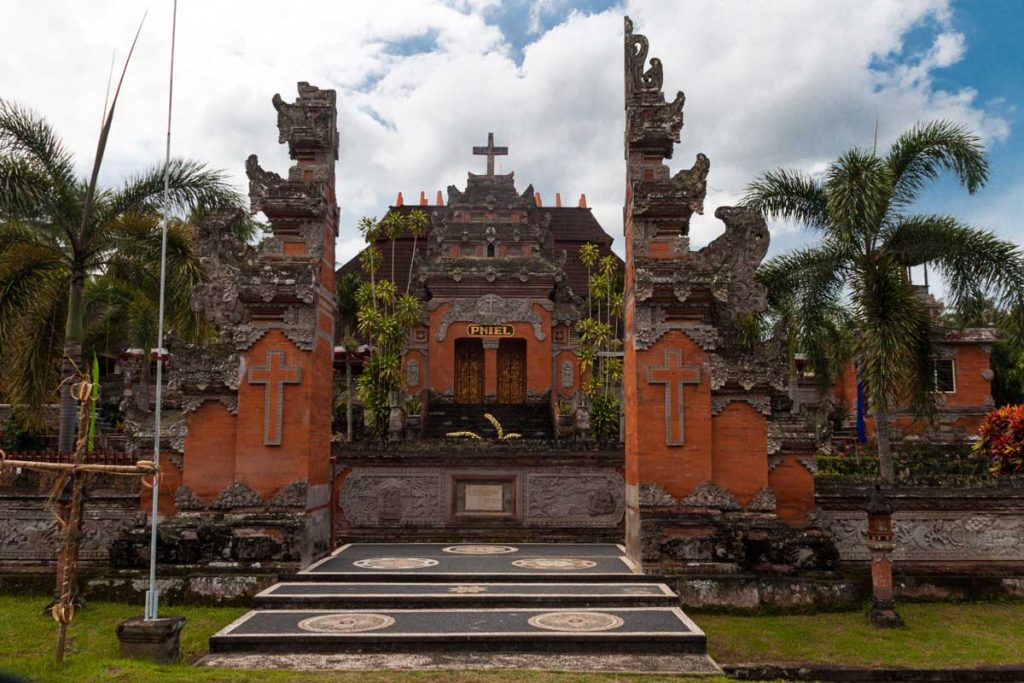
Just like Palasari, Blimbingsari is set amongst gorgeous countryside. Riding up to the village, one will see Muslims tending to their daily chores. This being west Bali, there are a considerable number of Muslims, for Java is not far away. The whole area around Blimbingsari feels tranquil, surrounded by forests and rice fields.
The religious practices of the two villages are also unique. Come Christmas day, villagers of Palasari and Blimbingsari will flock to their Balinese-inspired churches, wear their traditional Balinese attire, bring their Balinese offerings, sing gospels and hymns to a gamelan orchestra, and serve their Balinese food (the famous Babi Guling included) – the only things missing here is the Balinese Hinduism. Traditional Balinese dancing is also performed in both villages; but instead of the depiction of the Mahabharata and Ramayana tales, the characters resembled in the dances come from the bible.






